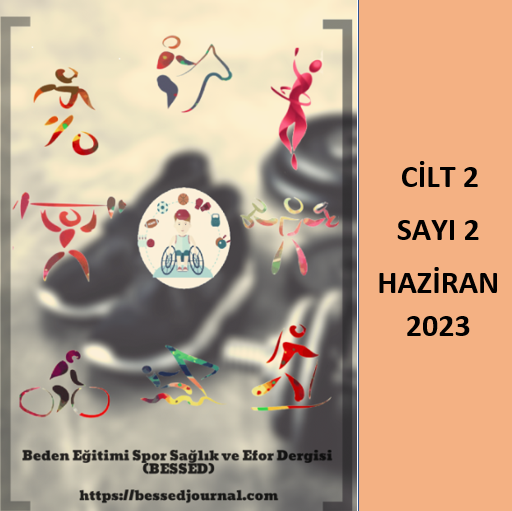Author :
Abstract
Ahlaki kimlik, bireylerin duygu, düşünce ve davranışları etkileme konusunda ciddi bir potansiyele sahip benlik algısıdır. Araştırmanın amacı, spor bilimleri fakültesinde öğrenim gören öğrencilerin ahlaki kimlik düzeylerini saptamak ve öğrencilerin ahlaki kimlik düzeylerini yaş, cinsiyet, bölüm, sınıf ve düzenli spor yapma durumu açısından karşılaştırmaktır. Araştırma, Gazi Üniversitesi Spor Bilimleri Fakültesi’nde 1.,2.,3.ve 4. sınıfta öğrenim gören 323 öğrenciyi kapsamaktadır. Araştırmada nicel araştırma yöntemlerinden tarama deseni kullanılmıştır. Verilerin toplanmasında, Kişisel Bilgi Formu ile Yılmaz ve Yılmaz (2015)’ın Ahlaki Kimlik Ölçeği kullanılmıştır. Verilerin analizinde, frekans, aritmetik ortalama, standart sapma; Pearson Moment Korelasyon, bağımsız örneklemler için t-testi, tek yönlü varyans analizi (ANOVA), Post-Hoc test istatistikleri (Tukey HSD) analizi tekniklerinden yararlanılmıştır. Araştırmaya katılan öğrencilerin Ahlaki kimlik ölçeği’nin alt boyutları olan içselleştirme ve sembolleştirme boyutları ile yaş değişkeni arasında, negatif yönde düşük düzeyde anlamlı farklılık tespit edilmiştir. Cinsiyet değişkenine göre, içselleştirme düzeyinin kadınların lehine anlamlı düzeyde yüksek olduğu saptanmıştır. Sınıf değişkenine göre, 4.sınıf öğrencilerinin içselleştirme ve sembolleştirme düzeylerinin 1.,2.,3. sınıf öğrencilerine kıyasla anlamlı şekilde düşük olduğu saptanmıştır. Yaş arttıkça içselleştirme ve sembolleştirme düzeylerinde düşüş olduğu söylenebilir. Kadınların içselleştirme boyutunda erkeklere göre anlamlı düzeyde yüksek farklılığa sahip olmasının kaynağı olarak, kadınların kendi zihinlerinde oluşturduğu ahlaki şemaları daha güçlü benimsemiş olmaları gösterilebilir. Sınıf değişkeni açısından içselleştirme ve sembolleştirme düzeylerinin 4.sınıf öğrencilerinde anlamlı düzeyde düşük olması, onların mezuniyet sonrasında hayata atılma stresinden kaynaklandığı düşünülmektedir.
Keywords
Abstract
Moral identity is a self-perception that has a significant potential to affect individuals' feelings, thoughts, and behavior. The aim of the research is to determine the levels of the moral identity of the students who are studying at the faculty of sports sciences and to compare the moral identity levels of the students in terms of age, gender, department, class, and playing regular sports. The research consists of 323 students studying 1st, 2nd, 3rd, and 4th grade in the Faculty of Sport Sciences of Gazi University. Screening design was used in the research as a quantitative research method. In collecting the data, the Personal Information Form and Moral Identity Scale of Yilmaz and Yilmaz (2015) were used. In the analysis of the data, frequency, arithmetic mean, standard deviation; Pearson Moment Correlation, t-test for independent samples, one-way variance analysis (ANOVA), post-hoc test statistics (Tukey HSD) analysis techniques. It was determined that there were negatively significant differences at the low level between the Internalization and Symbolization dimensions, which are the sub-dimensions of the Moral Identity Scale, and the age variable of the students participating in the research. According to the gender variable, the level of Internalization was found to be significantly higher in favor of females. According to the class variable, the levels of Internalization and Symbolization of the 4th-grade students were found to be considerably lower than the 1st, 2nd, and 3rd-grade students. It can be said that the levels of internalization and symbolization decrease as age increases. The reason for the fact that females have a significantly higher level of difference in the internalization dimension compared to males can be the fact that the moral schemas that females created in their own minds have been adopted more strongly. The fact that Internalization and Symbolization levels are significantly lower in 4th-grade students in terms of class variables can be said to be due to the stress of beginning to work after graduation.
